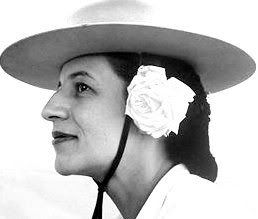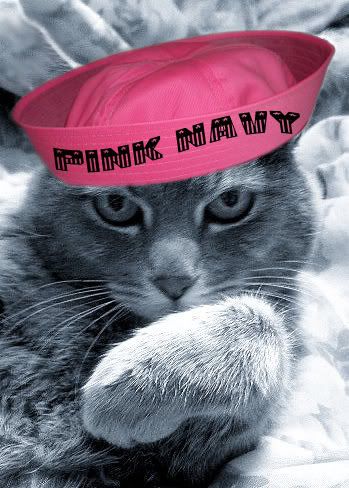 If Judy Garland had had a disco period, access to peroxide, a beauty-queen past and a string of men who killed themselves, she might have been this week’s Girl in Every Port, Dalida.
If Judy Garland had had a disco period, access to peroxide, a beauty-queen past and a string of men who killed themselves, she might have been this week’s Girl in Every Port, Dalida.
Our girl was born Yolanda Gigliotti in Cairo, Egypt, to a family of Italian immigrants who expected her to go to secretarial school. As usual in these circumstances, however, she had other ideas. In 1954, she entered and won the Miss Egypt contest. She changed her name to Dalida, played a bit part in an Omar Sharif movie and then promptly left for Paris to make a name for herself.
After the usual struggles, she was taken up by, and took up with, Lucien Morisse, the married artistic director of the Europe 1 radio station, and recorded her first single, entitled, wouldn’t you know, “Madonna.” But it was her second single, “Bambino,” that turned into her first number-one hit, and she eventually became the opening act for Charles Aznavour.
After the usual montage of hit singles and concert tours, she returned a star to her native Egypt. Then it was back to Paris, more hit singles, and an ultimatum to Lucien Morisse—divorce your wife, or else. She and Morisse married in 1961, but a few weeks after the wedding (which had involved the expense of flying her entire family from Egypt), she traveled to Cannes for a concert and there fell in love with a man named Jean Sobieski (who later went on to father Leelee Sobieski), and left her husband for him.
She bought herself a chateau in Paris, on top of Montmartre, behind the Sacré-Coeur. Then she divorced Morisse, broke up with Leelee Sobieski’s future father, and became a blonde.
More hits and world concert tours, and lonely years in the chateau. In 1966, the RCA record label introduced her to a young Italian songwriter, Luigi Tenco. Naturally, they fell in love while working on a song for her for the San Remo music festival in Italy. Indeed, they decided they would both perform at the festival, each with their own version of the same song, “Ciao Amore.” In January of 1967, they arrived in San Remo, and announced that they would be getting married in April, a marriage that, alas, was never to take place. Neither Tenco nor Dalida won the song festival, and Tenco got smashed on tranquilizers and alcohol, and accused the festival’s jury members of being corrupt. He then went back to their hotel room and killed himself. A few months later, Dalida tried to do the same by taking a full bottle of barbiturates.
She reinvented her look again, started wearing a long white robe, and was dubbed “Saint Dalida” by the French press. More hits and world concert tours. And in 1970, her ex-husband and Svengali, Lucien Morisse, committed suicide. (For those of you keeping score, that’s two.)
In 1973, her duet with Alain Delon (yes, that Alain Delon) was a huge hit, and she met a new love, Richard Chanfray, who claimed to be the Comte de Paris, but was most likely an impostor (shades of Zsa Zsa Gabor and her prince). More phenomenal hits and world concert tours.
Then she went back to her roots (recording in Arabic) and had her disco period. In 1978, she had a smash show at Carnegie Hall, which (in the symmetry of these music-star narratives) made up for an unsuccessful American tour in the 1950s.
In 1979, she had her biggest disco hit with “Monday, Tuesday (Laissez-moi danser),” which we have included below in two versions for your delectation. The first version, from one of the numerous variety shows on French television, is not to believed—hydraulic lift, white fur stole, clones in leather pants. And the best part occurs about a minute into the clip when, having thrown her white fur stole to the floor in a grand and fabulous gesture, a fan or flunky sneaks in on his knees to save the white fur from the trodding feet of her back-up dancers. The other version is a remix by Cerrone, and, oh boy. Once again, you are advised to pull the shades down, and hide anyone you want to protect from the huge, gay-making ray that will erupt from your computer and lay gayste to everything within a two-mile radius.
Returning to Egypt in 1979, she was met by President Sadat. More hits and world concert tours. Then she broke up with Richard Fresnay, got in trouble for supporting President Mitterrand, and left on a year-long world tour to get out of the spotlight in France. She returned to France in 1983, and later that year found out that Fresnay, erstwhile Comte de Paris, had committed suicide in St. Tropez, albeit not in a cabana. (That’s three.)
More concert tours, more failed affairs, and on May 3, 1987, the woman who sold something like 80 million records (back when there still were records) and became the foremost European gay icon, killed herself with an overdose of barbiturates. She has, indeed, practically been elevated to sainthood. The French government released a Dalida postage stamp, and one of the main squares in Montmartre has been renamed in her honor. Her gravesite is a place of pilgrimage. Oh, and did we mention that during her last-ever photo shoot, with Mario Testino for Vanity Fair, Princess Diana was listening to Dalida’s hits? (Oh, and Di's boyfriend, Dodi al-Fayed, was also Egyptian.) Hmmmmm. Makes you think, doesn’t it?
Monday, February 19, 2007
Pink Navy Girl in Every Port: Dalida
Posted by
Charlus
at
6:04 AM
![]()
Labels: Dalida, Disco, Gay Gay Gay, Gay Martyr, Girl in Every Port, Judy Garland, Princess Diana, Suicide
Subscribe to:
Comment Feed (RSS)







|